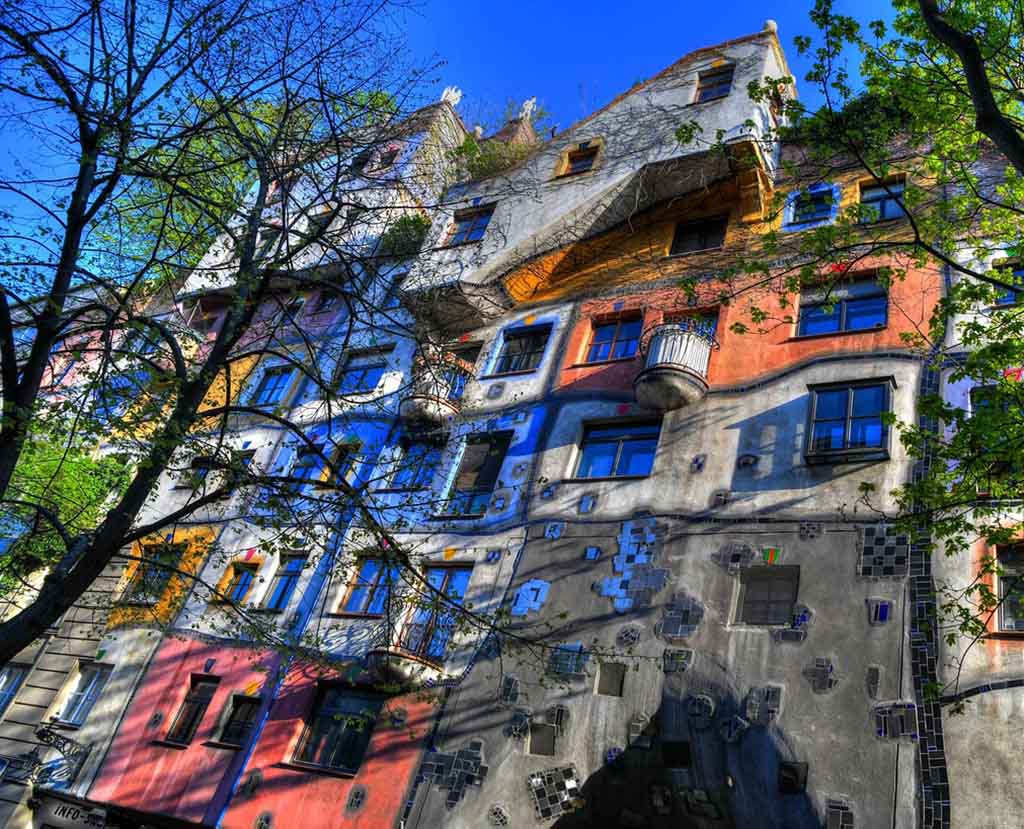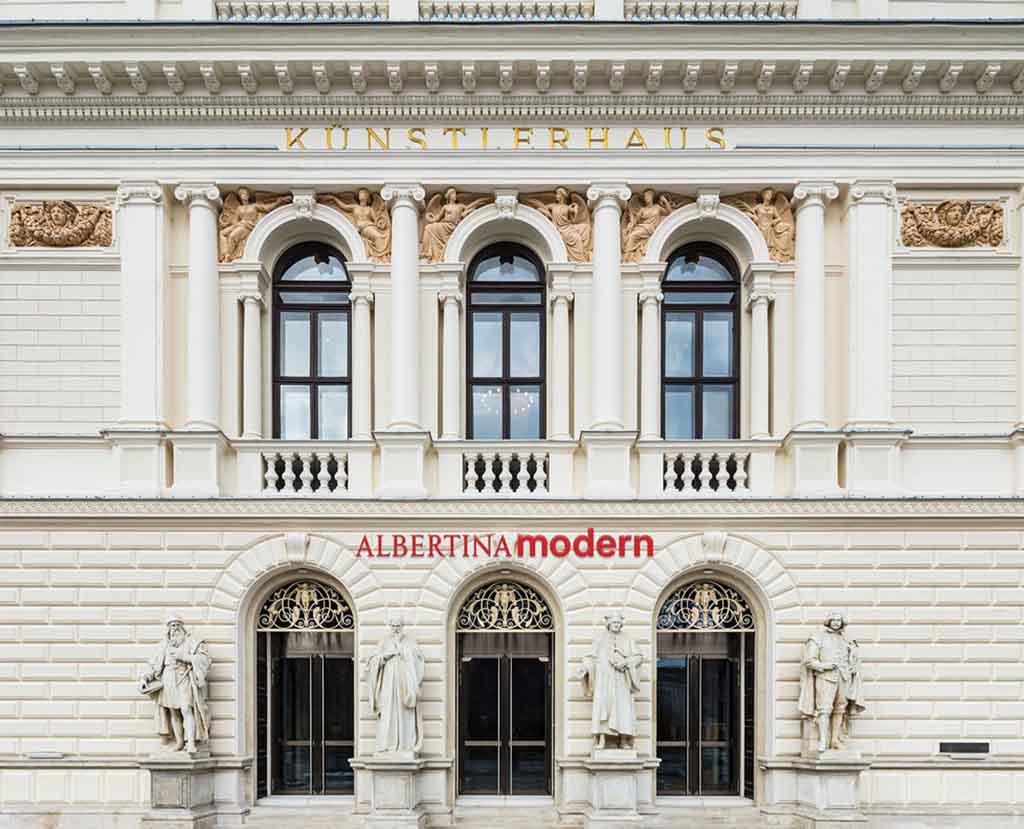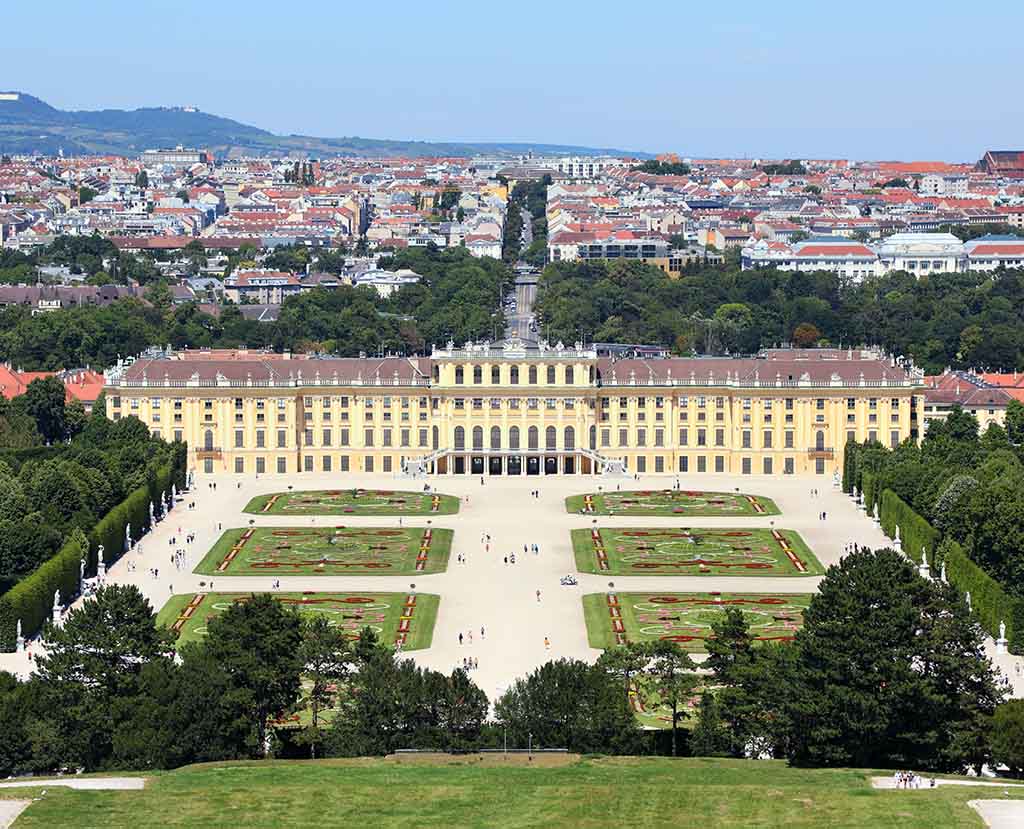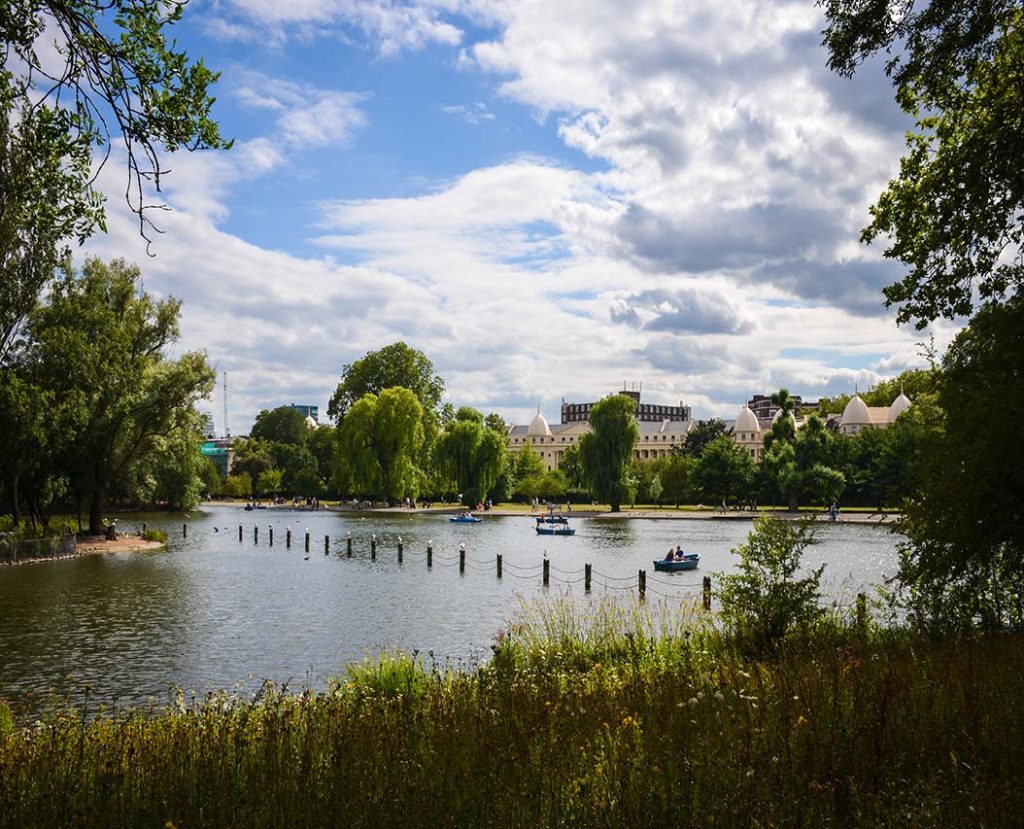Vienna, the ancient capital standing on the Danube River, has been a major center of European culture, music, and art since the Middle Ages. What really attracts lovers of architectural aesthetics is not only the heavy imperial legacy, but also the city texture that has been constantly changing and integrating over time. From neoclassical palaces to secessionist-style residences; from Rococo dome churches to contemporary minimalist buildings, this place is like a three-dimensional art history book, waiting for every traveler to read.
Ⅰ. Recommended attractions
1. Schönbrunn Palace: A symbol of the glory of the Habsburg dynasty
Location: Schönbrunner Schloßstraße 47, 1130 Vienna
Opening hours: 8:30 – 17:30 daily (extended to 18:30 in summer)
Suggested time for visiting: 3 hours
Transportation route: Metro Line U4 to Schönbrunn Station, 5 minutes walk
Booking platform: GetYourGuide, Tiqets, Klook
Expense: Adult ticket is about 26 euros, student ticket is about 21 euros, and the package ticket with guided tour is slightly higher
Schönbrunn Palace (Schloss Schönbrunn) is not only the most iconic attraction in Vienna, but also one of the most spectacular Baroque buildings in Europe. This palace built in the 18th century was once the summer palace of the Habsburg royal family. Its architectural style combines the grandeur of Baroque and the magnificence of Rococo, especially in the Hall of Mirrors and the Great Gallery. The visual luxury created by the golden reliefs and crystal chandeliers makes people feel as if they have traveled back to the heyday of the imperial era.

The symmetrical gardens and the Gloriet-Katein building outside the palace are also examples of architectural layout and landscape design, with a French garden style. It is recommended that tourists choose a package with an audio guide to explore the essence of its more than 600 rooms in depth.
2. Vienna State Opera: An Elegant Example of the New Renaissance
Location: Opernring 2, 1010 Vienna
Opening hours: Open according to the performance schedule and the guided tour time period
Suggested play time: 1.5 hours (internal visit) or according to the performance schedule
Transportation route: Subway U1, U2, U4 to Karlsplatz Station
Booking platform: Viator, GetYourGuide, Klook
Expense: Internal guided tours are about 12 euros for adults, and the price of performance tickets depends on the performance (ranging from 25 to 250 euros)
The Vienna State Opera (Wiener Staatsoper) was built in 1869 and is a classic work of the Austrian neo-Renaissance style. The exterior of the building uses a lot of light-colored stone with a curved dome, showing a combination of medieval and classical Roman elements. The interior is resplendent with golden boxes, red velvet seats and mosaic glass ceilings, reflecting the royal aesthetic standards.
For architecture fans, even if you don’t watch a performance, you can take part in the daily scheduled internal tour to appreciate its structure and artistic decoration. The opera house is adjacent to Karlsplatz and Ringstrasse, making it a great starting point for a walk to explore the architectural heritage of Vienna’s central area.
3. Hundertwasserhaus: A reconciliation between fairy tales and nature
Location: Kegelgasse 36-38, 1030 Vienna
Opening hours: The exterior is open all day, Hundertwasser Art Village and Museum 10:00 – 18:00
Suggested time for play: 1.5 hours
Transportation route: Take tram No. 1 to Hetzgasse station and walk for 5 minutes
Booking platform: Klook, GetYourGuide, Tiqets
Expense: Hundertwasserhaus and museum package is about 12 euros
Hundertwasserhaus is an ecological residence designed by Austrian artist Friedensreich Hundertwasser in 1983, symbolizing a challenge to traditional architectural forms. This colorful and irregular building seems to jump out of a fairy tale book, breaking the coldness of industrial-era architecture with its curved roof, green terrace and asymmetrical windows.
Its concept emphasizes that “houses are the third layer of human skin”, and each window reflects the personality and attitude of the residents. Hundertwasser Art Village is located across the street, exhibiting more of Hundertwasser’s paintings and architectural models. It is a model of the perfect combination of architectural aesthetics and ecological thinking.

4. St. Stephen’s Cathedral: The soul of the city with Gothic beauty
Location: Stephansplatz 3, 1010 Vienna
Opening hours: The church is open from 6:00 to 22:00 every day, and the tower and catacombs have slightly different opening hours
Suggested play time: 2 hours
Transportation route: Metro U1 or U3 to Stephansplatz Station
Booking platform: Tiqets, GetYourGuide, Klook
Expense: Free entry to the church, tower and underground guided tour tickets range from 6 to 18 euros
St. Stephen’s Cathedral (Stephansdom) is located in the heart of Vienna’s old town and is one of the city’s most important landmarks. It was built in the 12th century, and its architectural style combines Gothic, Romanesque and Baroque elements. Its south tower is 137 meters high, which is a classic expression of the vertical aesthetics of Gothic architecture.
The colorful glazed tile roof inlaid with the Austrian national emblem is the most eye-catching pattern in the Vienna skyline. The dome arcade inside, the beautifully carved pulpit, and the royal tombs hidden underground are all about the intersection of sacredness and history. It is recommended to make an appointment in advance on a third-party platform to visit the tower and underground guided tour to avoid queuing on site.
5. Albertina Museum and Modern Art Museum Group: The Perfect Intersection of Old Palace and New Art
Location: Albertinaplatz 1, 1010 Vienna
Opening hours: 10:00 – 18:00 daily (extended to 21:00 on Wednesdays)
Suggested playing time: 2.5 hours
Transportation route: Subway U1, U2, U4 to Karlsplatz or Stephansplatz, walk to reach
Booking platform: Klook, GetYourGuide, Tiqets
Cost: Adult ticket price is about 18 euros, student ticket price is 13 euros, and sometimes combined ticket discounts are available
The Albertina Museum was originally a palace of the Habsburg royal family, and was later converted into an art museum. Its main building continues the 18th century neoclassical style, and its marble porches and arches are its distinctive features. The interior furnishings are full of modernity, and original works by art masters such as Picasso, Monet, and Klimt are often exhibited.
The museum combines the layout of palace-style exhibition halls and modern lighting exhibition areas, reflecting the architectural concept of “dialogue between the old and the new”. It is recommended to buy a package that includes the Albertina and the Museum of Modern Art, so that you can deeply experience the charm of the intersection of contemporary and historical art architecture in Vienna in one day.

In Vienna, architecture is not just a stack of bricks and lines, but also a concrete expression of art, politics, culture and philosophy of all dynasties. You can touch the thousand-year-old faith in St. Stephen’s Cathedral, feel the light of the empire in Schönbrunn Palace, listen to the whispers of nature and freedom in the Hundertwasser Apartments, hear the aesthetic echoes in the National Opera House, and see the collision sparks of the fusion of the old and the new in the Albertina.
Whether you are an art professional or an ordinary traveler, as long as you are willing to slow down, observe with your eyes and feel with your heart, every wall and every line in this city can become the most beautiful memory of your journey.
Ⅱ. Practical tips for visiting Vienna’s architectural attractions
1. Buy tickets in advance to save time
Vienna’s popular attractions such as Schönbrunn Palace, Hofburg Palace, Albertina Museum, etc. often have long queues during the peak tourist season. It is recommended that tourists buy tickets online in advance through third-party booking platforms (such as GetYourGuide, Klook, Tiqets, Viator, etc.). Some platforms also provide fast-track options that can save time and arrange the itinerary reasonably.
2. Arrange time reasonably and avoid peak hours
Some attractions such as St. Stephen’s Cathedral and the National Library are most crowded from 10 am to 2 pm. If you want to take pictures of empty scenes or enjoy a quiet atmosphere, it is recommended to go in the morning when the door opens or in the evening before closing. In addition, weekends and holidays are peak times for local residents to visit, and it is more comfortable to visit on weekdays.
3. Pay attention to dress and etiquette
When visiting religious buildings (such as churches) or royal-related places, it is recommended to dress neatly and avoid being too exposed. Please keep quiet when entering the church and do not use flash when taking pictures. Some venues prohibit photography, so be sure to read the tourist notice before entering.
4. It is more economical to use the Vienna City Card
If you plan to visit many attractions intensively, you can consider purchasing the Vienna City Card or Vienna Pass. These cards not only include unlimited rides on transportation, but also discounts or even free admission to many attractions, bringing more convenience and savings for in-depth travel.
5. Bring your ID and cash
Some attractions require you to show your passport or ID when exchanging tickets or renting an audio guide. It is recommended to carry a copy with you. Although credit cards are generally accepted in Vienna, some souvenir shops, small restaurants or church donation boxes in the old town still prefer cash. Prepare some change in case of emergency.



